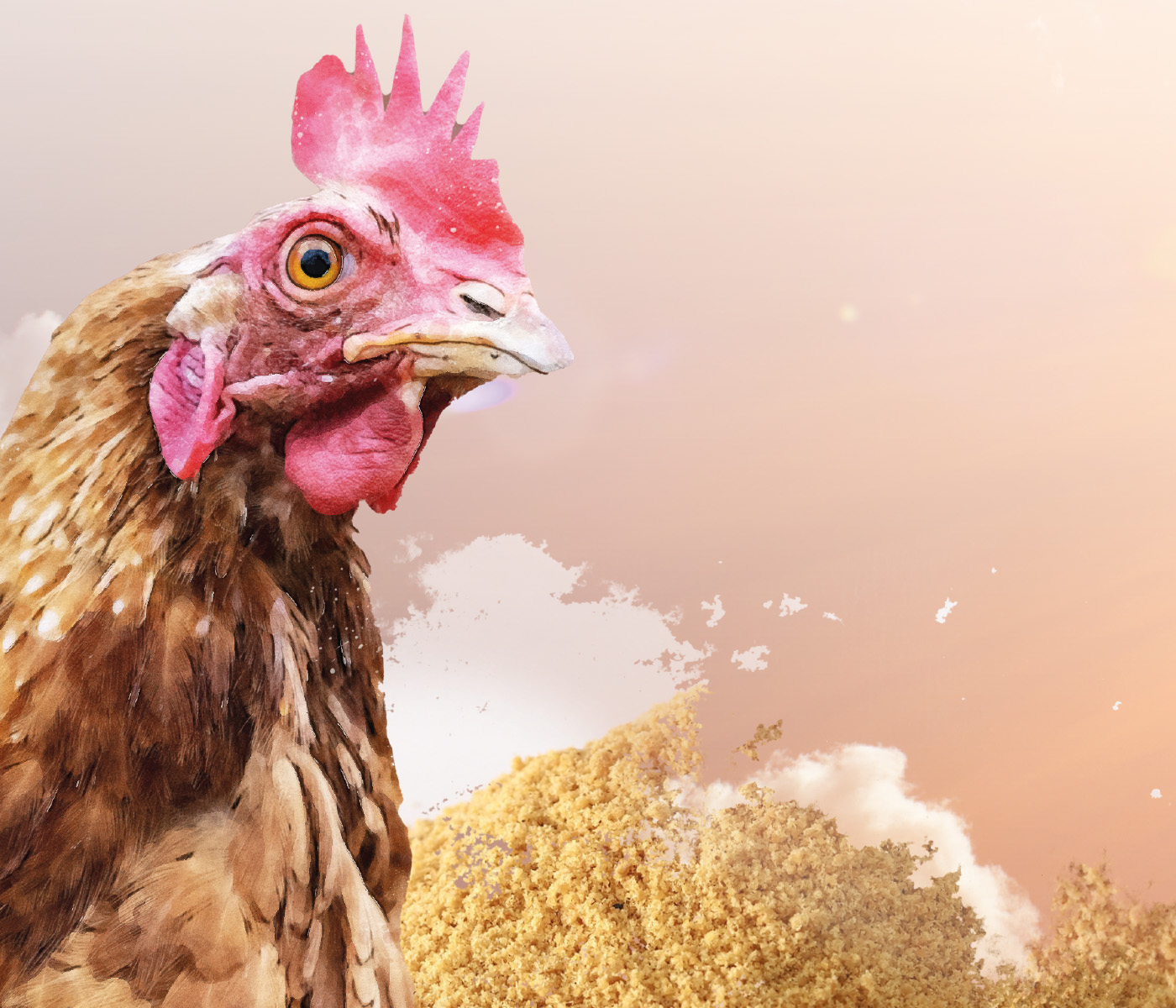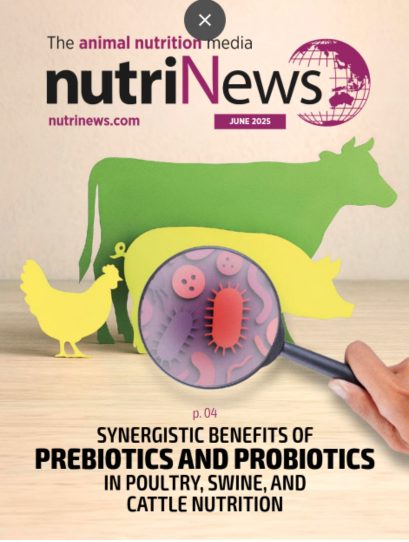Soybean meal continues to be the most common protein source for animal nutrition worldwide. However, most soybean meal used worldwide comes from Brazil, the United States, Argentina, and Paraguay. The environmental cost of transporting these soybeans from the American continent to other regions causes great concern among environmentalists, translating into certain pressure from consumers of animal products. Likewise, there is concern about the environmental impact of soy production in tropical environments, which can lead to deforestation, soil degradation, and overall more significant greenhouse gas emissions.
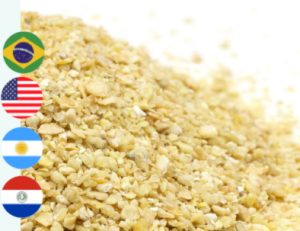
The Global Feed LCA Institute (GFLI) has compiled the environmental impact parameters of animal feed ingredients. This is an independent institute of the animal feed industry, and the feed industry is organized to provide a standard database of the results of Life Cycle Assessments (LCA). The objective is to improve the sustainability aspects of animal-origin food. Although egg and poultry production has the least environmental impact, feed is the area with the most room for improvement. The environmental impact depends 70 to 75% on feed ingredients and feed utilization. Table 1 summarizes the GFLI results on the impact of solvent-extracted soybean meal by country of origin. It can be observed that the values currently available for sustainability parameters such as climate change and land use favor American soybeans due to the tradition in production and technology on lands adapted to this crop.
Table 1. Sustainability parameters of solvent-extracted soybean meal depending on the country of origin according to the GFLI database.
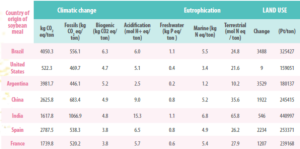
Source: Global Feed LCA Institute (GFLI) https://globalfeedlca.org/
However, this concern about sustainability is not new, and for decades, other feedstuffs have been evaluated as alternatives to soybean meal. However, the amino acid digestibility of soybean meals and the total content of digestible amino acids are better than those of sunflower or canola meal and DDGS, among others. Therefore, the overall sustainability balance may still be better for soybean meal. Ingredients with better digestibility always have a positive effect on the local environmental impact of the diet.
The utilization of the ingredient in the diet formulation depends mainly on a good description of the nutrient and energy content. In soybean meals, the country of origin is one of the factors by which a category can be differentiated or created for a more precise formulation. Variability has also been reported in the quality of soybeans and, consequently, in meals by regions within a country. There are differences between specific suppliers, as soy processing also plays a fundamental role in the final soybean meal product.

With so many factors causing variability, it is important to analyze the ingredients you receive and decide, according to the local database, how they can be divided into a few groups that consistently have different nutritional and quality characteristics. To do these analyses in a more consistent, faster, and more economical way and obtain several important nutritional parameters at the same time, NIRS equipment is the best tool currently available.
Several companies have generated calibration curves to estimate proximal analysis, amino acids, and energy using NIRS spectra. To give an example of using this information in feed formulation for layers, we have chosen two of these nutrient estimation services with NIRS. We chose AMINONIR® from Evonik and the PNE® service from Adisseo. The intention is not to compare them since their development is very different. The important aspect is to demonstrate the usefulness of these NIRS systems in describing nutritional composition and energy content. In this way, its value in balanced feed formulation can be perceived.

These NIRS calibrations have different origins according to the chemical analysis methods used for all nutrients, including amino acids, calculations for amino acid digestibilities, and energy content. Therefore, the results of analyses for similar samples may give different values in the two methods. In this case, we did not compare ingredients between the two systems. Whoever wants to use them must choose a system and apply it consistently.
AMINONIR calculates metabolizable energy for birds according to the WPSA (1989) prediction equations and uses digestibility coefficients for each ingredient based on previous experiments. In contrast, the PNE uses a direct calibration method using data from in vivo experiments and likewise estimates the amino acid digestibility values for each ingredient evaluated.
Using analyzed soybean samples, or the databases and reports of both AMINONIR and the PNE, it was possible to obtain the description of soybean meals of different origins. With AMINONIR, we described soybeans from three regions of the United States, Brazil, and Argentina. Meanwhile, with the PNE, soybean meals from Argentina, Brazil, and the United States were differentiated. This information was used to formulate diets for brown and white layers (Hy-Line) in phases 1 and 2. In each situation, the prices of the ingredients were different because they were two completely different market situations.
Examples of the diets generated are presented in Table 2. Soybean meal prices varied between 353, 471.50, and 590 $/ton. Corn prices varied between 198.82, 236.22, and 323 $/ton. Figure 1 shows an example indicating that all diet prices for brown or white layers were almost always cheaper for diets formulated with American soybean meals in red circles or triangles. This was observed with both NIRS systems.
Table 2. Examples of diets formulated for brown or white layers (W36) according to Hy-Line 2022 recommendations.
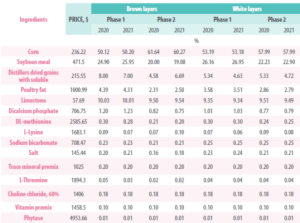
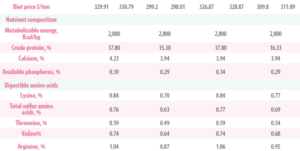
Figure 1. Prices of diets formulated using NIRS (PNE) information for brown and white layers with nutritional information for soybeans by country of origin in two years 2020 (•) 2021 (▲). The colors indicate the country of origin of the soybean meal.

If nutritionists do not consider differences in nutritional content and average all the nutritional information to use in the formulation, instead of using the specific information of each origin or supplier, they will be underestimating or overestimating the cost of the diet and nutritional composition as seen in the example in Table 3.
Table 3. Examples of differences in price and energy or nutrient content between a diet formulated with the average values or using the specific values of the ingredient’s origin, in this case, soybean meal from the United States, Brazil, and Argentina.
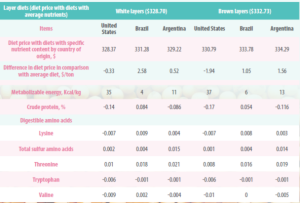
For example, brown layer diets with average nutrients, regardless of actual origin, priced at $332.73/ton, will be apparently $1.05 and $1.56/ton cheaper when using Brazilian or Argentinian soybean meals, and $1.94/ton more expensive for a diet using American soybean meals. However, diets obtained with this nutrient average may underestimate the actual nutritional content and are overformulating, offering more energy and some nutrients to the hens. In contrast, others may be formulated below the expected specification.
For example, the diet with average data without considering the origin would have 35 or 37 kcal/kg more, or 0.14 and 0.17 percentage points less protein, if the actual origin of the soybean meal is coming from the United States. This variability between the theoretical average data and what the feed contains affects the performance and quality of the egg. Therefore, it is always best to segregate ingredients by origin and use this information for formulation.
The main message of this example is to improve precision in the formulation, obtain better results in nutritional content, and improve performance in egg or poultry production.
You may also like to read: “Nutritional Value of Soybeans in Poultry Feed”

